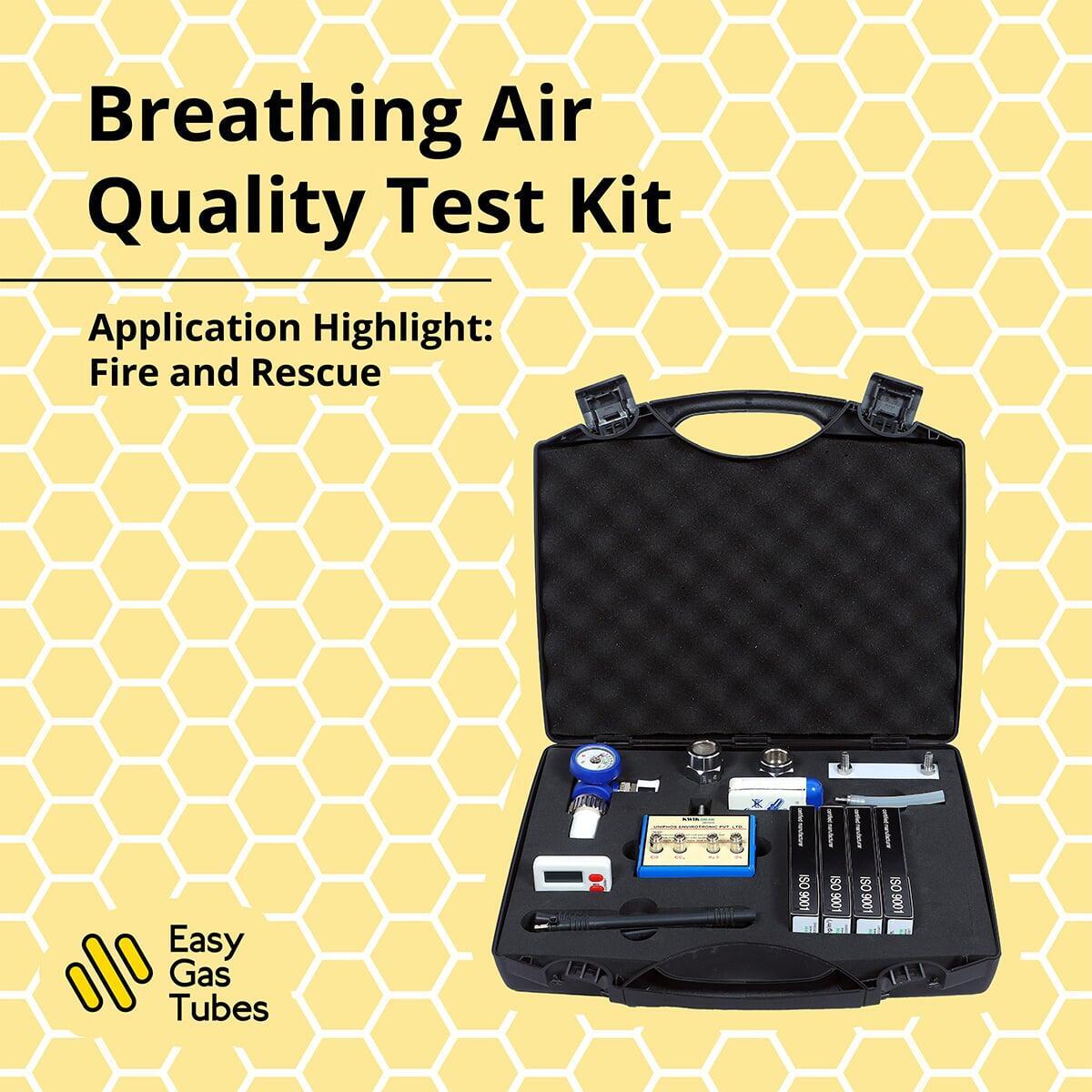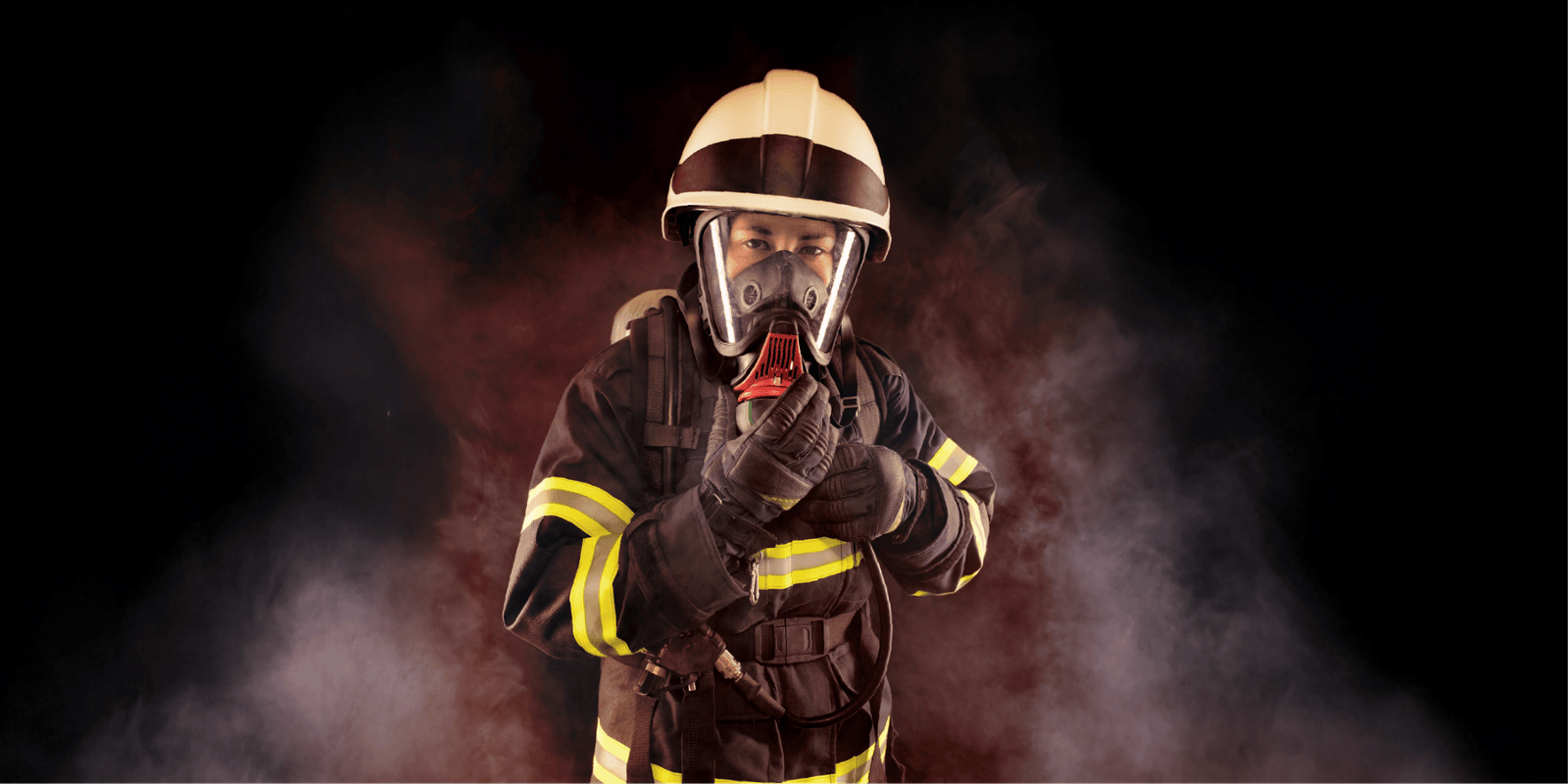
There are a wide range of applications in which a breathing air supply may be required. One of the most common and well-known applications are for Fire and Rescue teams. Fire and rescue teams use breathing apparatus for a huge range of reasons and always keep these on hand in case of an emergency. In this blog, were going to dive deeper into the Fire and Rescue services and their relationship with breathing apparatus. Discussing when and why they may use this equipment, why this equipment needs to be tested regularly and how these tests are performed.
When do Fire and Rescue teams require a Breathing Air Supply?
One of the most associated applications with Fire and rescue teams is when entering buildings engulfed with flames or tackling enormous outdoor fires. Depending on the fire type and location, a huge range of different hazards can be generated. Some of the most common are O2 depletion hazards and an increased risk of CO and HCN exposure, as well as hazardous dust mixtures in soot and ash. This lethal mix of materials and gases generated from a fire is known as a fire plume and can cause countless health problems.
Fire and rescue teams may also require breathing apparatus when responding to gas leaks. Although natural gas is explosive before it becomes a hazard to health, large gas leaks can create an asphyxiating atmosphere making it dangerous to enter without the proper breathing equipment. Gas leaks can also produce large amounts of CO, an extremely toxic gas at low levels, due to incomplete combustion.
Chemical spills are a worst-case scenario, which is why the hazmat division of the fire service are deployed to handle these situations. Although the hazard at hand will depend on the materials spilled, the most common chemicals encountered are Ammonia, Chlorine and Hydrochloric Acid. All of these materials will vaporise at room temperature, meaning a spill of these liquids can rapidly create a highly toxic gas hazard. Therefore, it is essential that these teams are equipped with breathing apparatus when dealing with these emergencies.
Fire and rescue teams may also require breathing apparatus when entering confined spaces due to the potential gas hazards in these areas. Confined spaces can occur at work and in day-to-day life and present a potentially hazardous atmosphere. Gas leaks and fires in these spaces can lead to gases and dusts quickly engulfing the environment. Ultimately requiring teams who are rescuing people to wear and carry breathing apparatus.
Why do they Need to Test their Breathing Air Supply?
Fire and rescue teams test their breathing air to ensure that it is free from contaminants and safe for them and the general public to use. Breathing apparatus is employed by these teams in times of emergency and provide and essential lifeline to themselves and those around them. Air cylinders can become contaminated quickly whilst on the job and in storage without the user being aware. Therefore, regular tests are essential to ensure the equipment is safe to use.
To find out more about how a breathing air supply may become contaminated and the regulations around it, check out our previous blog.
How do you Test your Breathing Air Supply?
Breathing apparatus is tested using a breathing air quality test kit. These contain detection tubes of each of the most common contaminants to help identify any potential issues with your breathing air. These contaminants are usually CO, CO2, Oil Mist and H2O, but people may also opt for additional O2 and Nitrous Fumes tubes as an extra precaution.
Easy Gas Tubes can provide the Kwikdraw breathing air quality test kit to help Fire and Rescue teams in keeping their equipment safe to use. The Kwikdraw kit comes in 3 different options, with all of the above detection tubes available, compatibility for medium and high-pressure air supplies and an additional tube pump for external testing if required.
The Kwikdraw breathing air quality test kit is also faster, lighter and lower cost than market alternatives, with the shortest flushing time and automatic on/off valve to save on compressed air. This saves on the long terms cost of ownership, as compressed air bottles do not have to be replaced as frequently. This kit contains everything you need to complete your testing in a compact and lightweight format.
Are we near you?
Easy gas tubes have distributors located across Europe, so we are never too far away from assisting you with your tubular needs. We are also looking for new partners! So if you are interested in becoming an Easy Gas Tubes distributor, contact us.



